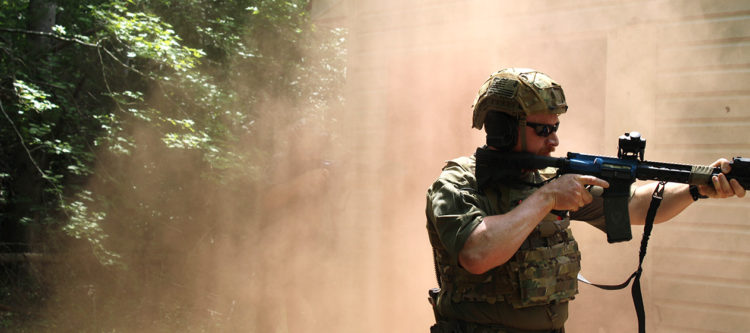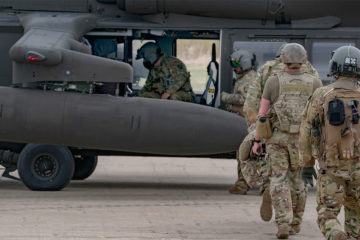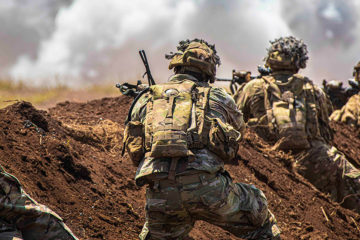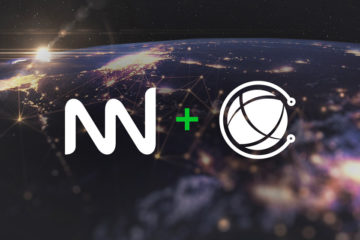Tech Spotlight Series: How Legionarius smart garments increase warfighter survivability

Every second counts when a warfighter is injured on the battlefield. Shortening the time from the point of injury (POI) to the point of treatment (POT) can increase survivability for the warfighter, but how can military decision-makers immediately know a soldier is injured and deploy medical intervention in a more timely fashion?
Decreasing the mortality rate of warfighters is a large part of the mission for Legionarius, a technical solutions provider for armed forces personnel in high-risk and combat environments.
We recently sat down with the company’s CEO, Dr. Alexander Gruentzig, to learn more about the company’s smart garment solutions, how they can help increase survivability for warfighters, and how mobile mesh networking can ensure the functionality of smart garments in austere, network-denied environments..
The Last Mile (TLM): Can you tell our readers a bit about Legionarius? How did the company get its start?
Dr. Alexander Gruentzig: Legionarius was born out of the urgent need to increase situational awareness and survivability on a multidomain battlefield in the event of a warfighter injury.
If someone is shot or wounded by shrapnel during a military operation, every second counts to stop the bleeding. We believe that our technology has the potential to significantly shorten the time it takes from the POI to the POT for warfighters and dramatically increase their rate of survival.
TLM: What exactly is a smart garment? Why would the military want to equip warfighters with smart garments?
Dr. Alexander Gruentzig: Today, the only way to identify if a warfighter has been injured is through traditional verbal communication methods or physically entering data into information systems. Unfortunately, both processes require human intervention and waste valuable time in life-or-death situations.
The Legionarius Wound Detection Smart Garment can sense a penetrating impact to the body—such as a gunshot, shrapnel injury, cut, or burn—and can autonomously send out an alert via ATAK over goTenna’s Pro X mesh networks for instant casualty reporting and tracking. This alert is then transmitted to surrounding medics, giving them a head start on treating the injury.
“BY INTEGRATING OUR SENSORS INTO EXISTING GEAR THE WARFIGHTER IS COMFORTABLE WITH–SUCH AS COMBAT SHIRTS, JACKETS, AND PANTS–WE ARE ADDING A NEW CAPABILITY TO THEIR COMBAT-PROVEN CLOTHING.” –DR. ALEXANDER GRUENTZIG
Our garment automatically and instantly provides essential information to the relevant parties. It tells them how many casualties there are, who was injured, what type of wound they have, and their current and historic vital signs. It also communicates where and when the injury occurred on the battlefield and the casualty’s current geographic location.
TLM: Why would soldiers want to be equipped with these garments?
Dr. Alexander Gruentzig: Every second counts when massive hemorrhaging occurs after a serious wound on the battlefield. Getting Tactical Combat Casualty (TCC) steps started early by automating the casualty and wound identification process can save lives.
By integrating our sensors into existing gear the warfighter is already comfortable with—such as combat shirts, jackets, and pants—we are adding a new capability to their combat-proven clothing. We also natively integrate with systems like ATAK that they are already familiar with.
Our smart garments will get them medical attention more quickly when they need it, and they do so using existing equipment and solutions that they’re already accustomed to. There is no learning curve.
TLM: What connectivity requirements do smart garments have? Do they need to be connected to function?
Dr. Alexander Gruentzig: The smart garments connect via USB directly to the ATAK End User Device (EUD), Battlefield Assisted Trauma Distributed Observation Kit (BATDOK), or the warfighter’s data hub. This physical link is required to activate the garment’s connected features.
“SOME MOBILE MESH NETWORKS LIKE GOTENNA’S ARE AN INHERENTLY LOW-VISABILITY COMMUNICATION CAPABILITY.” –DR. ALEXANDER GRUENTZIG
The EUD running ATAK or BATDOK needs connectivity to send data and alerts back to military decision-makers. However, anything the ATAK EUD uses for connectivity—such as cell service in traditional connectivity environments and mobile radios in remote locations—can be used with our garment, if connected to the ATAK plugin.
TLM: Can they work with mobile mesh networks? Do they lose any functionality or capability when connected via mobile mesh networking?
Dr. Alexander Gruentzig: Yes, our smart garments are fully functional within mobile mesh networks and do not lose any capabilities by utilizing this type of network.
Some mobile mesh networks like goTenna’s are an inherently low-visibility communications capability.
This makes the combination of our smart garments and mobile mesh networking an ideal solution for operations in austere, off-grid locations where communication networks are denied, untrusted, or degraded.
TLM: Why is Legionarius working with goTenna? How do the company’s products and solutions work with Legionarius’ smart garment technologies?
Dr. Alexander Gruentzig: After working alongside various end-user groups inside and outside the DoD, we identified the enormous potential of integrating our smart garments with the widely established and adopted mobile mesh networking solution goTenna offers.
“WORKING WITH GOTENNA ENSURES THAT OUR SMART HARMENTS INTEROPERATE WITH THE SOLUTIONS ALREADY DEPLOYED AT THE TACTICAL EDGE.” –DR. ALEXANDER GRUENTZIG
Legionarius partnered with goTenna as part of Small Business Innovation Research (SBIR) Phase I and Phase II contracts to develop goTenna’s integration with Legionarius’ wound detection garments. This enabled us to fully integrate our system to function with goTenna’s data protocols and hardware.
Their mobile mesh networking solution has provided us with increased adaptability and situational awareness in remote environments where traditional communication infrastructure has been denied or compromised. Also, goTenna is already widely adopted across much of the U.S. military and U.S. federal law enforcement community. Working with goTenna ensures that our smart garments interoperate with the solutions already deployed at the tactical edge.







No Comment